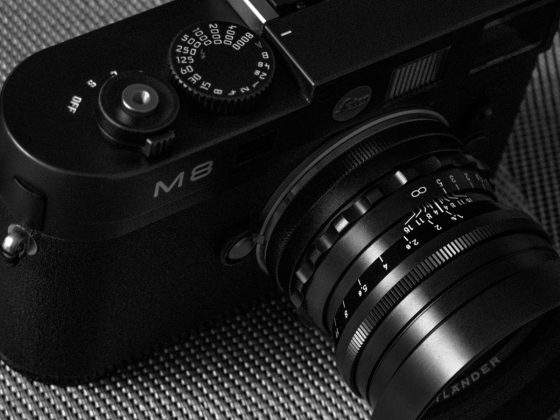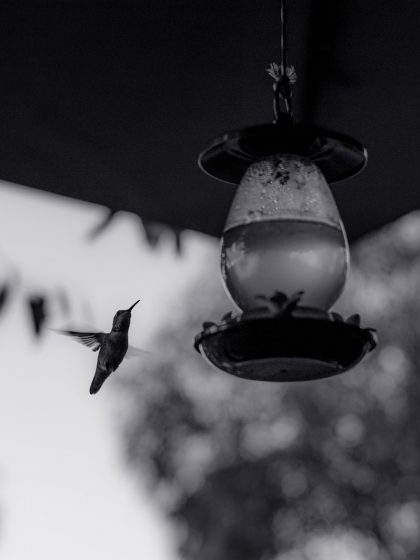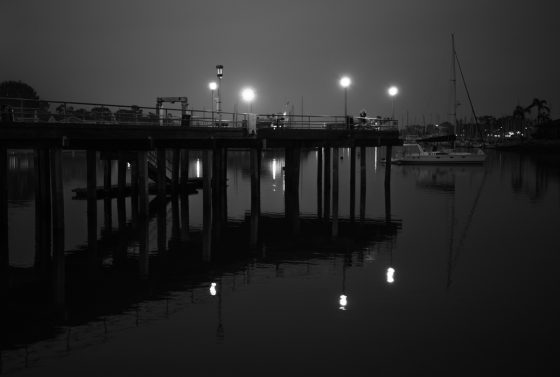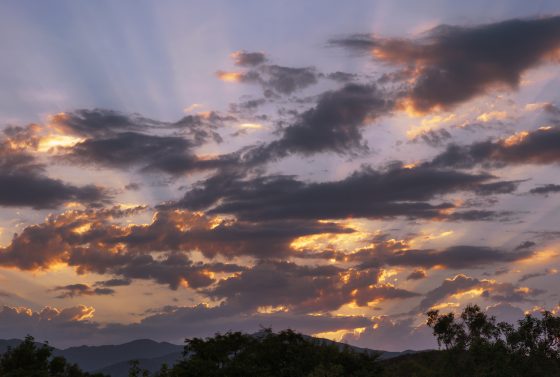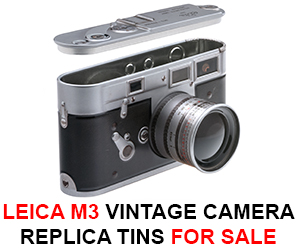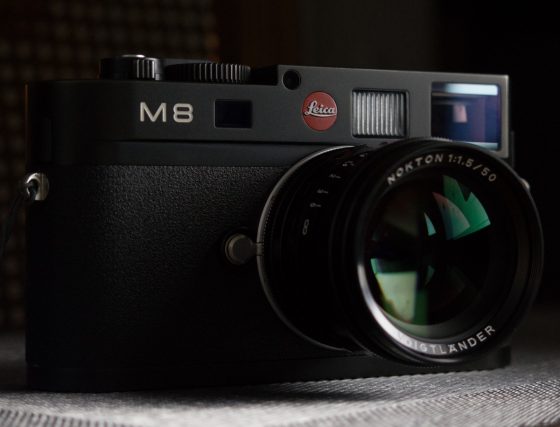
Leica M8 Rangefinder: Diary of Realigned Obsession by Carl Garrard:
Today’s article reveals a personal confession of a past gear obsession and a subsequent simultaneous realignment of priorities. This article is more about photography than a review of a camera, but we’ll get into that in a bit. My purpose here with publishing this article is that I hope to echo some thoughts and struggles of other photographers, and that by way of having honest disclosure to you. In short, Iím sharing because I care about the world of photography in which we thrive. Like us all, I am human and just as susceptible to making disadvantageous choices once in a while. In this article I reveal my thoughts on newer camera gear, why I’ve decided to simplify my main camera system, and why ultimately I chose a rangefinder such as the Leica M8 for this task.
Introduction Leica M8: Admission of Obsession
After a few years of self-imposed gear distraction which entails obsessing about petty details and specifications, features hoarding and ease of use, Iíd finally decided to simplify my digital shooting experience to the bare essentials. Iíve decided through inspiration (by way of experiences) to shoot with a digital rangefinder as an exclusive main camera system. To once and for all do away with having multiple camera systems. Turns out, one camera system is all I needed- just one camera and three or four lenses. As a result of this change, a personal epiphanic transformation of sorts occurred. For starters, I’d realized many setbacks that Iíd caused my own growth in photography. Obsessive habits- some which are good, and some which are bad, were realigned and prioritized.
Yes Leica’s are beautiful. But so was the Epson R-D1 series. We rangefinder shooters just don’t have any other digital options for real rangefinders. It’s not the brand I’m in love with, it’s the design I love. It would be nice to see a company make a competitive line of more affordable digital rangefinders to compete with Leica. Voigtlander, we would welcome you arms wide, please consider.
Finally, I stopped this nonsense of gear hoarding having realized that the pursuit of an optimal or, dare I say perfect camera gear system, is a completely pointless and impossible endeavor. Instead of continuing a search for new gear as I had been doing, I realized that I had become a slave to a master that had no end game, no soul, and no vision. How embarrassing this realization was. So instead of obsessing about holes in my gear I needed to fill, I decided instead to obsess about filling holes in my creative spark and photographic technique; a healthy and productive transformation.
What matters now is not how or why I got there. What truly matters is continuing to move forward and embracing the desire that drove me to make images in the first place. Itís funny, because only the important goals seem to matter now. All the other obsessions of gear and minute unimportant details just instantly melted away. My head is clear again with vision and purpose with photography. The hardest part of it all was just making that decision.
Certainly, I was my own worst enemy, but I am also not hard on myself about it. There is no reason to be. No longer do I desire to languish in regrets or obsess on details that I canít really control. There is nothing I can do about the past, but I do control the present. As a result, I’ve been excited to get out there again, every day. Even when I’m not shooting I’m looking around and practicing compositions in my head. I’m looking for good light, and those special moments to be captured.
No longer am I distracted by indecision with complicated equipment either, I am simply just doing. I have focus again by being involved in the photographic process. Ultimately it is my goal is that I make my previsualizations and serendipitous moments become reality on print. Admittedly, this is an exercise in freedom that Iíve not felt since my innocent days of discovering photography as a young man. I had been languishing inside for too long. It was time for a change.
Using the Leica M8: The Mindset
Now, with a simpler system (Leica M8 and a few lenses), all I think about is making the best photographs I can. Using the M8 forces me constantly to remember what is ultimately important. To make a good photograph, you need to be involved in every part of the photographic process. Connecting your mind and body to a manual process is what it is all about, and it’s lovely. I am making images again, not relying on automation. This is the heart and soul of a rangefinder experience. It’s not about brand love, or looking a part (that actually sickens me), it’s about technique; an organic chemistry between man and machine to make something. And I believe this process produces higher quality images that express my intent with photography.
Shooting with the M8 is rather simple for me, it’s just about finding light, composing, and exposing the scene. In that exact order. I donít even care about framing accuracy for the most part, or getting perfect focus. This is because a good photograph has flaws no matter how much you obsess, and getting the moment framed and captured is what is most important. When it comes to flaws, ironically they are often what helps make the photograph look natural, or give it character. As long as sharpness is good enough for someone to make out the basic details, that is good enough. Exposure and composition to me, are much more important. Sharpness is about being good enough most of the time, not perfect. Just think about famous photographs of history, it’s the exposure, composition (with timing), that have made them masterpieces.
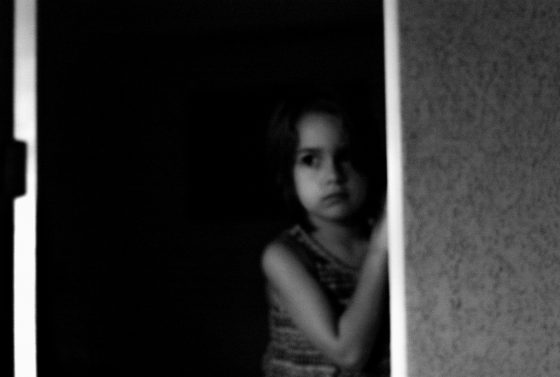
Looking out into the world. Soft focus. Sharpness would have ruined the mood. This was an instinct shot with very little time to react.
With this mindset, it’s rewarding. I can actually pay attention to the world around me again, because my mind is free. Iím in touch with my creative drive as a main focus point, not fiddling with menu options or staring at an LCD screen. Ironically with a simple camera like the M8, I make faster decisions and more decisively. This leaves space in my mind for much more creativity. Being connected to a camera and lens with my hands becomes intuitive, part of myself. I know how wide of a scene my camera will capture before I bring my eye to the finder, because it’s become a habit to do so.
Previsualization is powerful, and effective. You become the master of a scene before you, not a slave to indecision. You see the world around you, you are in tune with your gear, and you capture it.
Shooting with the Leica M8: Why I Prefer a Rangefinder
First I’ll sum up the entire M8/Rangefinder experience by saying that it is an intuitive and simple system to use and a gratifying experience. Shooting with a digital rangefinder such as the M8 is nearly the same experience I had with the Bessa 3A film rangefinder, only I get to review my images in camera. Though, in order for rangefinder photography to become a simple experience, a bit of skill and a lot of practice is required. Being tuned into your gear as an extension of yourself and will, is the goal. It just becomes part of you. Just like driving a car every day with a manual transmission becomes part of me, so too does shooting with the M8.
Metaphorically I’ll liken the M8 to playing a musical instrument; it is a very similar process. And Iím not talking about playing a synthesizer either, Iím talking about playing the classical guitar, a jazz drum set, or say, a trumpet. A synthesizer, is much like a modern camera. Admittedly highly capable, there are a myriad of options, and distracting decisions to be made, just like many more modern digital cameras. You see, the more I practice with the M8, the better I get with it. It’s as capable as I allow myself to be. The experience of that kind of satisfaction, is difficult to find with other cameras.
Viewing the world through the M8’s large static viewfinder and framing within it, has advantages. You see more of the scene, and can easily anticipate subjects moving into the frame. The view never changes, so it’s easier to become in tune with it as a result. All that changes are the frame lines depending on the lens you use. Practice makes perfect, so try and use a single favorite lens most of the time.

Paired with the Voigtlander 50mm f/1.5 Nokton lens and a large aperture setting imbues this magic light atmosphere.
Shooting with a rangefinder has advantages. First of all, the smaller size and classic look is unintimidating to subjects, this is a huge advantage. Also, the weight of the camera keeps camera shake way down. I’ve got a hand held images down to one-half of a second exposure routinely tack sharp. No need to rely on image stabilization here.
The M8 also has a few design features and advantages I’ve grown to appreciate that my film rangefinder didn’t have. The small LCD window displaying constant battery life and image storage capacity are one such feature. Also, being able to shoot at 1/8000th of a second speaks for itself, and bests much more expensive M cameras. I find a fast shutter speed to be a real advantage for shooting wide open to create mood and isolation in the brightest of light. Having retained the frame selector switch and ambient rangefinder/bright line window are two classic features I actually find helpful at times while adding a classic look to its design.
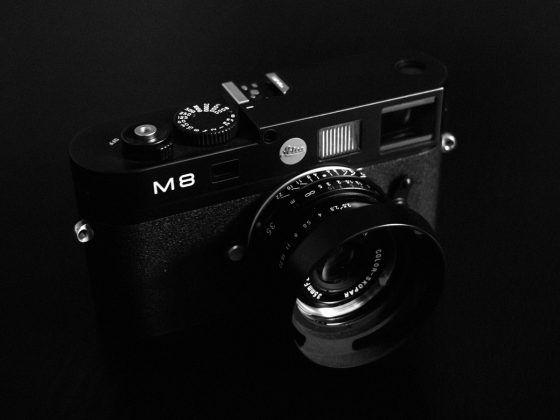
Simple, manual, classic. The M8. Compact, mechanical, built for life by hand. Although easy on the eyes, the real joy of the M8 is using it. All I see is a camera that begs me to use it, not admire it.
If I haven’t already drilled this in your head, I’ll say it again. I rather enjoy the physical and mental experience of becoming one with my camera by simultaneously aligning creativity with the simple fundamentals of photography. That exercise I find, is indeed an almost meditative state, and where I do my best work. Of all the photography equipment I have used, the M8 forces me to do that more so than others, bar of course, film cameras. Therefore, it is simply my best choice for my needs. I’d also highly recommend the Voigtlander’s Bessa R3/4a for film lovers which have an unrivaled large viewfinder, they’re even more simple, well built, and come with a handy AEL lock button on the back.

Bessa R3A, an inexpensive introduction to rangefinder photography (image from my review on this site).
Back to the M8, trust me when I say shooting with it becomes second nature, and it’s also quick to react. It’s funny saying that with a manual focus only camera, but it’s certainly true. I never would have believed that before I actually took the time to properly use it. But since I’m learning to prefocus more and plan ahead, I find that I’m ready for more opportunities than I would have thought possible. One well planned and executed shot is worth more than any amount of missed shots. Moments happen once, being trained mentally allows you to capture them precisely when it matters most.
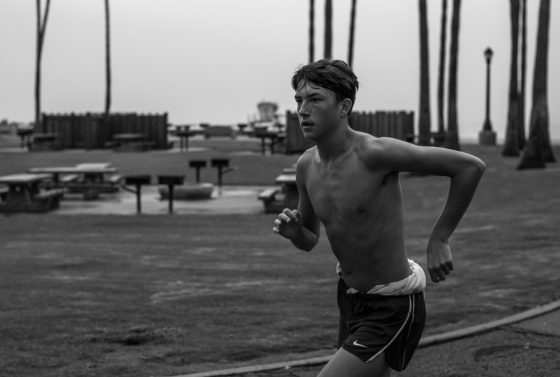
I prefocused this shot anticipating the runner coming into view. I took one shot, and that is all I needed. He never noticed I took his shot. Discreteness is a key advantage to using an M. Having a huge static viewfinder really helps.
No other camera feels like a Leica M rangefinder. Preferably for me at least, I’d rather use an M without live view. While I liked my time with the Typ 262 quite a bit (also reviewed on this site), there is something to be said to have less features and performance to fall back on or be tempted to use. And thus over time I ended up preferring a more minimalist camera like the M8 (or M9). The experience is such that I have more mental focus on less tasks, and as a result I feel my skills improve. I’m much more aware and plan my shots better, my mind is active, not lazy or dependent on technology, and this mindset is thus more engaging. You can get a similar experience with a film rangefinder or Leica M9, but the M8 seems to be the most challenging of all the digital M’s to get good results with. And I’m very happy with that fact.

As much as I liked the Digilux 3/Panasonic L1, time with the M8 has shadowed those cameras. I look at them as stepping stones to finally arriving where I am today.
As far as the output goes, Iím very happy with what the M8 can produce. It’s got a great Kodak made CCD sensor and processing raw files is a true pleasure. The lack of an AA filter on the sensor means I get the most detail a 10mp sensor can provide, and big 20×30î prints are easily possible. All I really need. Thereís not one single reason I can find where the M8 should stand in the way of making big beautiful prints. Matched with certain lenses, color and monochrome files alike are simply stunning. Atmosphere in M8 images is a mixture of great glass and a stellar detail rich CCD sensor. With both of my main lenses being fast glass, I rarely need to pull my sensitivity above ISO 160, and therefore I’m getting the most out of it.
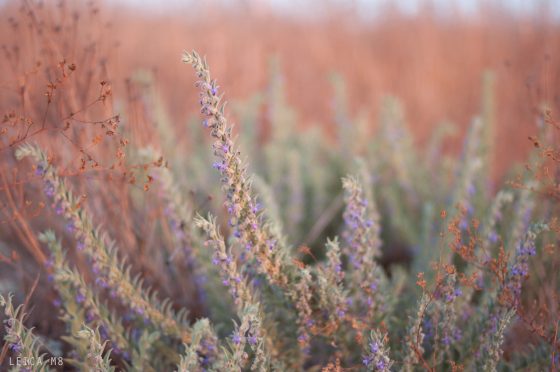
Rich pastels. No IR filter used. You don’t need one as much as you would think by reading online. In fact, I’ll argue color files look better in midtones without an IR filter in color and monochrome alike.
And lastly, being able to shoot stellar monochrome, infrared, and rich color images in one camera make the M8 the most versatile M of all in terms of creative options. There’s an advantage to its weak IR cut off filter for Monochrome images, the mid-tones show the incredible depth that make this camera arguably the best M for monochrome work out of the box. Note for the color images in this article, none employed the use of a separate IR filter on the front of the lens. I think the hype of color shift on the M8 was more of a press field day than a real practical issue. I do not worry about using an IR filter at all.
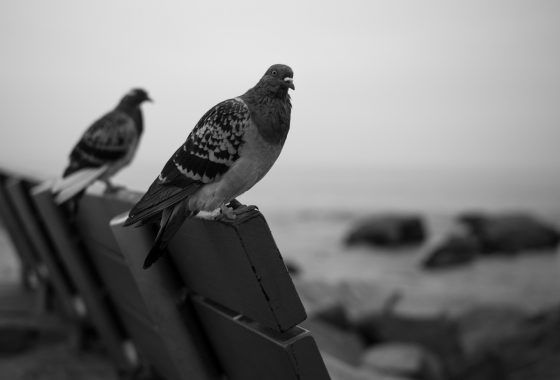
Unintimidating to all living creatures. The M8 allows you to get shots just like a super quiet pocket compact. You are rewarded with super rich monochrome images for your hard work. I was about two and a half feet from this pigeon.
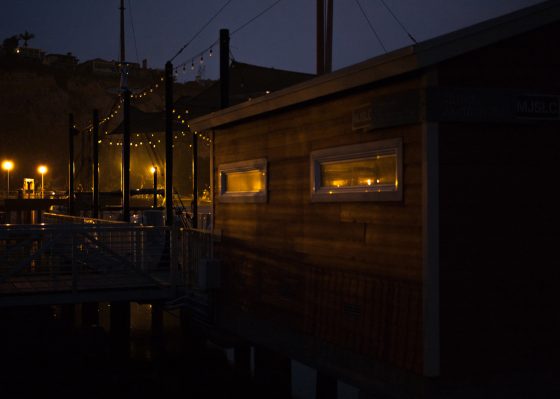
Dock house, Dana Point CA. The light string is not turned on, that is an ambient light reflection. ISO 320, 1/8th sec exposure, f/4.
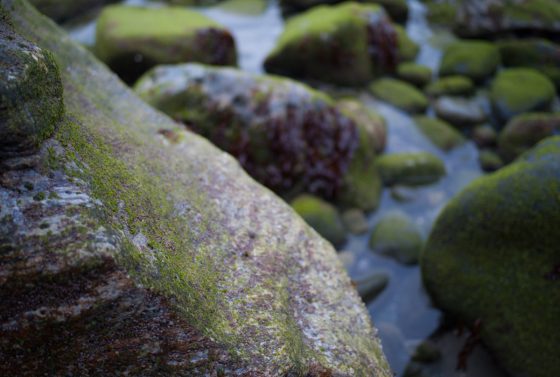
Rich buttery smooth color, midtones galore. I love the look of CCD, and the lens helped enhance the look here as well.
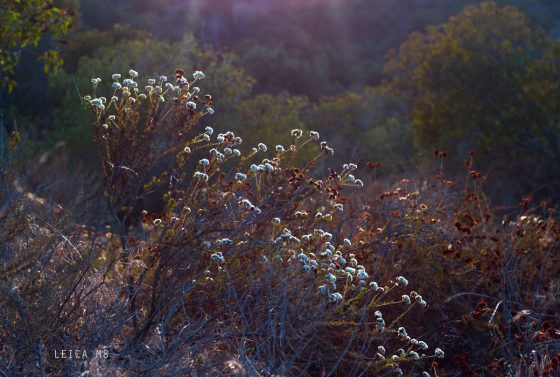
Subtle atmosphere. Captures the feel of being there. I love the chaparral in southern California, there’s a ton of color even in the dead of summer.
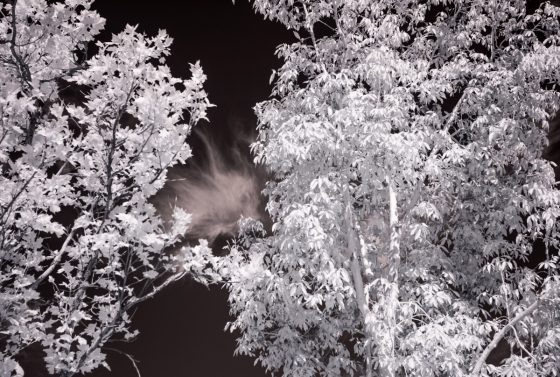
IR shooting is easily accessible hand held without the use of a tripod. Just use an IR PASS filter of your choice in front of the lens (I’d recommend a 720nm filter).
Concluding with the Leica M8: Realigned Experience
Overall as a rangefinder and as a system, I find the M8 and few lenses to be a pretty much ideal. Since Iím not a brand loyalist, I really donít care that it has a red dot on it. That said, I do reap the benefits of the Leica brand and appreciate having them. Those benefits are a camera system that truly holds its value, and it’s still able to be serviced today. Additionally, more affordable third party lenses and accessories will continue to be widely available for those with a limited budget. While digital cameras arenít future proof nearly as much as film cameras are, this is about as good as it gets in the digital world thanks to Leicaís continued ethos. Leica’s digital Mís future-proofness remains to be seen, but I canít think of a brand right now that depreciates less, or makes you feel more safely invested with your gear.
For those lusting after an M9, the grass isnít necessarily greener by default as I see claimed. In fact, there isn’t any default bullet proof-for-all advantage with gear ever. I canít stress this enough to readers. More and more I see articles that remind photographers of this fact, which is a welcome overall change in attitude. While I could go the M9 route for a different experience and advantages, I think Iíd miss some qualities of the M8 that I’ve learned to appreciate. The price of admission is much less for an M8 as well, the money you save you can spend on lenses. Or, just save your money.
For now Iíll stick with the M8 until such time as my pie in the sky daydream comes true; this in which Leica would produce a modern M with all the best features of the M8 and M9 combined. I dare Leica to make a modern full frame M that retains a frame line selector switch, bright-line window, 1/8000th second manual shutter, and lacks live view or video of any kind (the Typ 262 was close). I just do not want the temptation of live view or video, nor do I wish to have all the menu items associated with those features. Just produce a stills only camera that holds true to the rangefinder heritage as much as possible, such as the M8/9 do, and I think photographers would jump on that.
Iíll close by saying that itís a breath of fresh air shooting with a camera that provides the bare necessities and leaves the rest up to the photographer. My photography skill is improving again as a result, but more importantly, I’m enjoying photography more than ever. The rangefinder experience will undoubtedly improve your photography skills if you just have the patience (and the wallet) to allow it.
Most importantly, I’m relieved to be rid of gear obsession. Photography gear will again be prioritized to fulfill a role in my desire to create, not creating a desire to fulfill a constant need for an unobtainable goal. In parting, I hope to remind photographers who are struggling with creativity to obtain the gear that works best with their style of photography. Make that gear work for you. In doing so, you’ll find you rarely need to upgrade and will want to photograph more. After all, photography is what drives us.
Here’s to chasing sunrises and those once in a lifetime moments.
Cheers,
-Carl Garrard
If you have an interesting idea for a guest post, you can contact me here.
